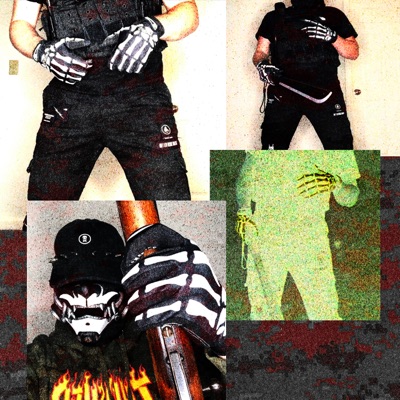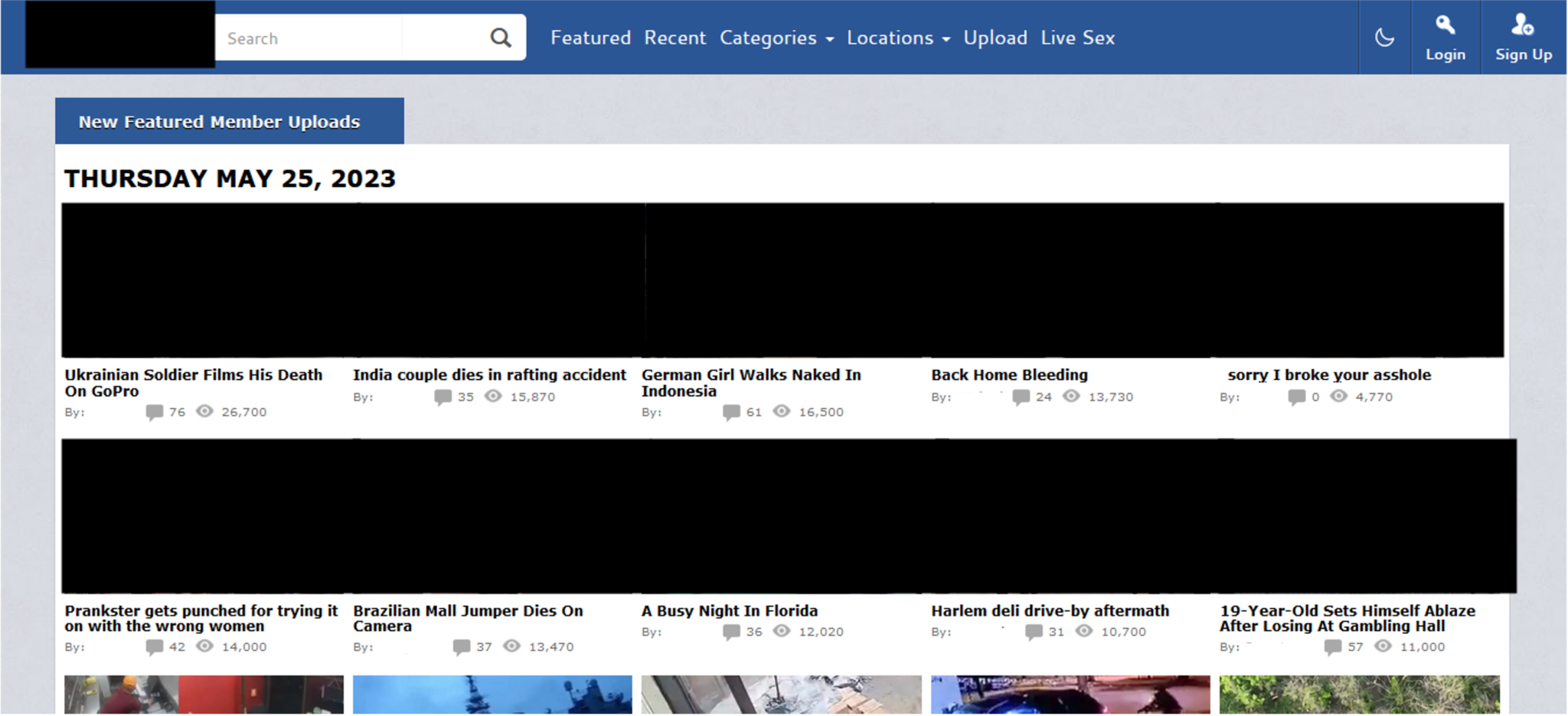Unpacking Bestgore.com: A Deep Dive Into The World Of Real-Life Gore And Its Controversial Legacy
The term "gore" often conjures images of horror movies, special effects, and the thrilling, albeit disturbing, escapism of fiction. Yet, there exists a stark contrast between cinematic violence and the raw, unfiltered reality of life and death. As the saying goes, "Gore isn't funny, to tell the truth, reality since 2020" has often presented us with uncomfortable truths. In this context, websites dedicated to showcasing real-life violent content have emerged, pushing the boundaries of what is acceptable and sparking intense debate. Among these, Bestgore.com stood out as one of the most prominent and controversial platforms.
This article aims to explore the phenomenon of real-life gore, distinguishing it from its fictional counterpart, and delve into the history, content, and profound impact of Bestgore.com. We will examine how this Canadian shock site operated, the infamous events that brought it widespread media attention, and the lasting legacy it leaves on discussions about online content moderation, freedom of speech, and public morality.
What Exactly is "Gore"? Fictional vs. Unfiltered Reality
Before diving into the specifics of Bestgore.com, it's crucial to understand the two main facets of "gore" that often get conflated: the fictional and the real.
Gore in Entertainment: The Fictional Realm
In the realm of entertainment, gore serves a specific purpose, often to shock, thrill, or convey the brutality of a narrative. Horror movies, in particular, are notorious for their use of graphic violence. From the surreal and grotesque imagery in films like Tokyo Gore Police to the intricate and disturbing traps of Saw 3, these are often cited as "the goriest horror movies of all time." These cinematic experiences are carefully crafted, using special effects and storytelling to create a sense of fear or disgust without the actual harm to real individuals. We might see a character who "gets sick and dies, at which time she comes back to life, killing and eating dogs, nurses, friends, and neighbors" – a clear fictional trope designed for entertainment, not a reflection of actual events.
The consumption of fictional gore is generally understood as a controlled experience. Viewers know it's not real, allowing for a psychological distance that transforms disgust into a form of thrilling discomfort. It's a cathartic release, an exploration of humanity's darker impulses within a safe, fabricated environment.
The Unfiltered Reality: Beyond the Screen
In stark contrast, real-life gore presents an entirely different proposition. "Gore videos explore the unfiltered reality of life and death with our gore videos collection," representing a raw, unedited glimpse into the most extreme aspects of human suffering and violence. These are not staged scenes for a movie; they are often actual recordings of accidents, crimes, conflicts, and their horrific aftermath. The purpose here is not entertainment, but rather, for some, a morbid curiosity, a desire to confront the harsh truths of existence, or, controversially, to document atrocities.
The impact of real-life gore is profoundly different. There's no psychological distance, no comfort in knowing it's "just a movie." Viewers are confronted with genuine pain, trauma, and death, which can lead to significant psychological distress, desensitization, or a distorted perception of reality. It challenges the viewer to confront the fragility of life and the depths of human depravity in a way that fiction rarely can.
Bestgore.com: A Canadian Shock Site's Rise and Fall
Bestgore.com was perhaps the most infamous platform dedicated to sharing this unfiltered reality. Its existence and eventual closure encapsulate many of the ethical and legal dilemmas surrounding online content.
The Genesis of Bestgore.com
Bestgore.com was a Canadian shock site founded by Mark Marek. It quickly gained notoriety for its explicit content. The site was "specialized in real-life, extremely bloody and violent news, photos, and videos," making it a go-to destination for those seeking the most graphic and disturbing content available online. What set Bestgore.com apart from many other similar sites was its interactive nature: it "allowed users to post and comment," fostering a community around the consumption and discussion of extreme violence. This user-generated content model contributed significantly to its rapid growth and vast collection of material.
Content Categories: A Glimpse into the Extreme
The content hosted on Bestgore.com spanned the spectrum of human brutality. Users could "browse our categories like executions, beheading, torture, etc." These categories highlight the extreme nature of the material, which often depicted severe injuries, fatalities, and acts of unimaginable cruelty. The site essentially served as an archive of human suffering, with "the most brutal and extreme gore videos in the deep gore tube website" often finding a home in its "pure gore" category. This collection was not merely shocking; it was designed to be deeply disturbing, pushing the boundaries of what most people could stomach. The sheer volume and graphic nature of the content meant that merely clicking on a video could instantly "make you" feel a profound sense of nausea, despair, or horror.
The Magnotta Incident and Public Scrutiny
While Bestgore.com operated for several years under the radar of mainstream media, a pivotal event in 2012 thrust it into the global spotlight and ultimately led to its downfall. On May 25, 2012, Luka Rocco Magnotta, a Canadian former pornographic actor, uploaded a horrific video to Bestgore.com depicting the dismemberment of Lin Jun, an international student. This act of extreme violence, coupled with its public dissemination on the site, instantly drew immense "media attention."
The incident sparked widespread outrage and an international manhunt for Magnotta. Simultaneously, it ignited intense scrutiny on Bestgore.com itself and its founder, Mark Marek. Public pressure mounted, leading to legal action. In 2013, Mark Marek was charged with "corrupting public morals," a significant legal precedent concerning the hosting of extreme content. Although he was eventually acquitted of the most serious charges related to the Magnotta video, the legal battles and public outcry effectively crippled the site, leading to its eventual closure in 2020. The Magnotta case served as a stark reminder of the real-world consequences and ethical quagmires associated with platforms that facilitate the sharing of such graphic material.
The Impact and Legacy of Real-Life Gore Sites
The existence and eventual demise of Bestgore.com underscore a persistent tension in the digital age: the balance between freedom of expression and the need to protect public safety and morality. While proponents of such sites might argue for the right to view "unfiltered reality," critics emphasize the potential for harm, including desensitization, psychological trauma for viewers, and the glorification of violence.
The "reality since 2020" has arguably shifted public perception, with increased exposure to real-world violence through news cycles, social media, and citizen journalism. However, the curated, extreme nature of sites like Bestgore.com goes far beyond general news coverage, delving into the depths of human suffering in a way that often lacks context or purpose beyond shock value. The legacy of Bestgore.com is a cautionary tale, highlighting the ethical responsibilities of online platforms and the profound psychological and societal implications of disseminating truly brutal and extreme content.
In conclusion, Bestgore.com served as a controversial digital repository for real-life gore, founded by Mark Marek and gaining notoriety for its unfiltered content categories like executions and torture. Its role in the Luka Rocco Magnotta case brought it under intense media scrutiny and led to its founder being charged with corrupting public morals. While fictional gore in movies like Tokyo Gore Police offers a controlled thrill, Bestgore.com exposed viewers to the raw, disturbing reality of life and death, often with significant psychological impact. The site's closure in 2020 marked the end of an era for one of the internet's most infamous shock sites, but the debate surrounding the ethics of sharing such extreme content continues to resonate.
- Peeling Pieds Lovaskin
- Lexxi Lash
- Pair And Marotta Physical Therapy
- Olym Dress
- Alan The Alchemist Podcast

Best Gore!!! - Gxrefck | Shazam

Blood, Guts & Gore! The Top 20 Bloodiest Crime Scene Photos Revealed

Gore and violent extremism: How extremist groups exploit ‘gore’ sites